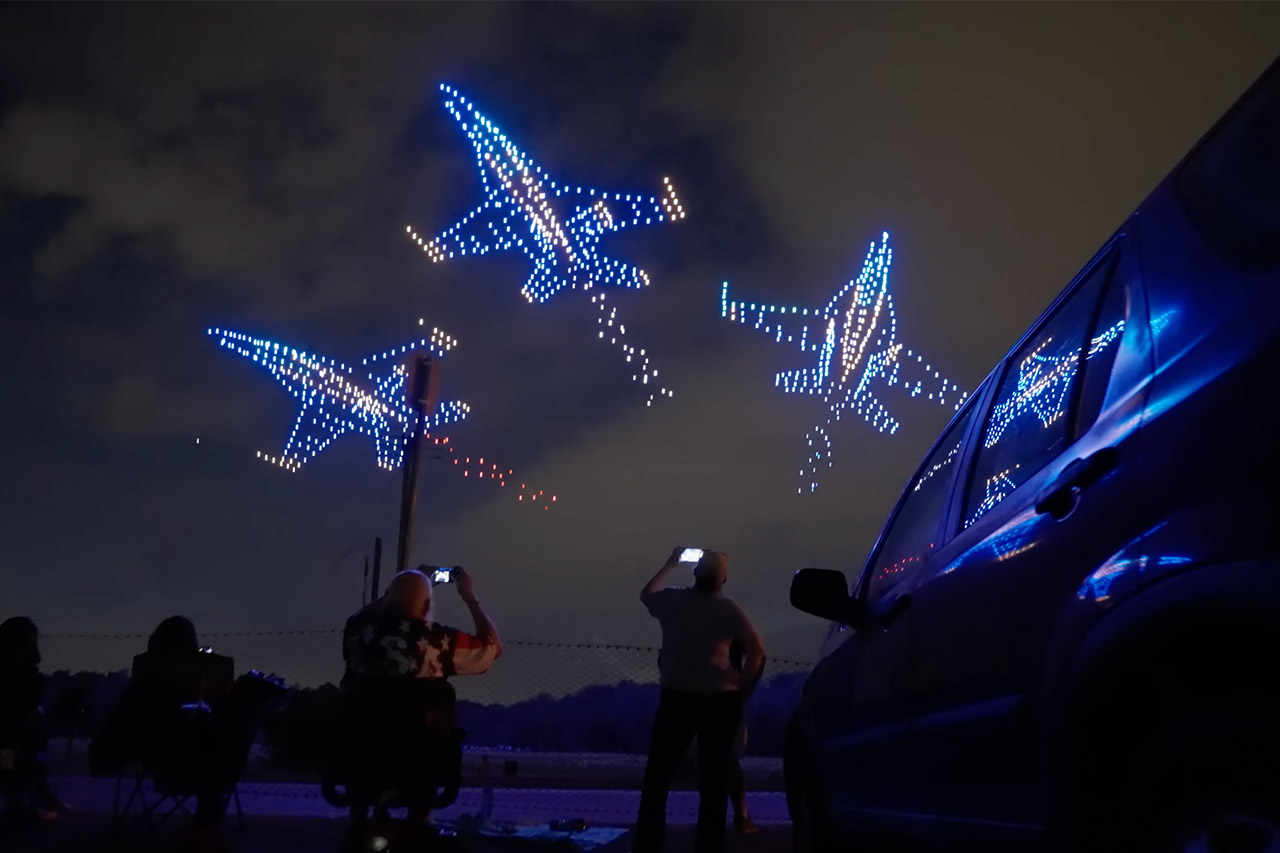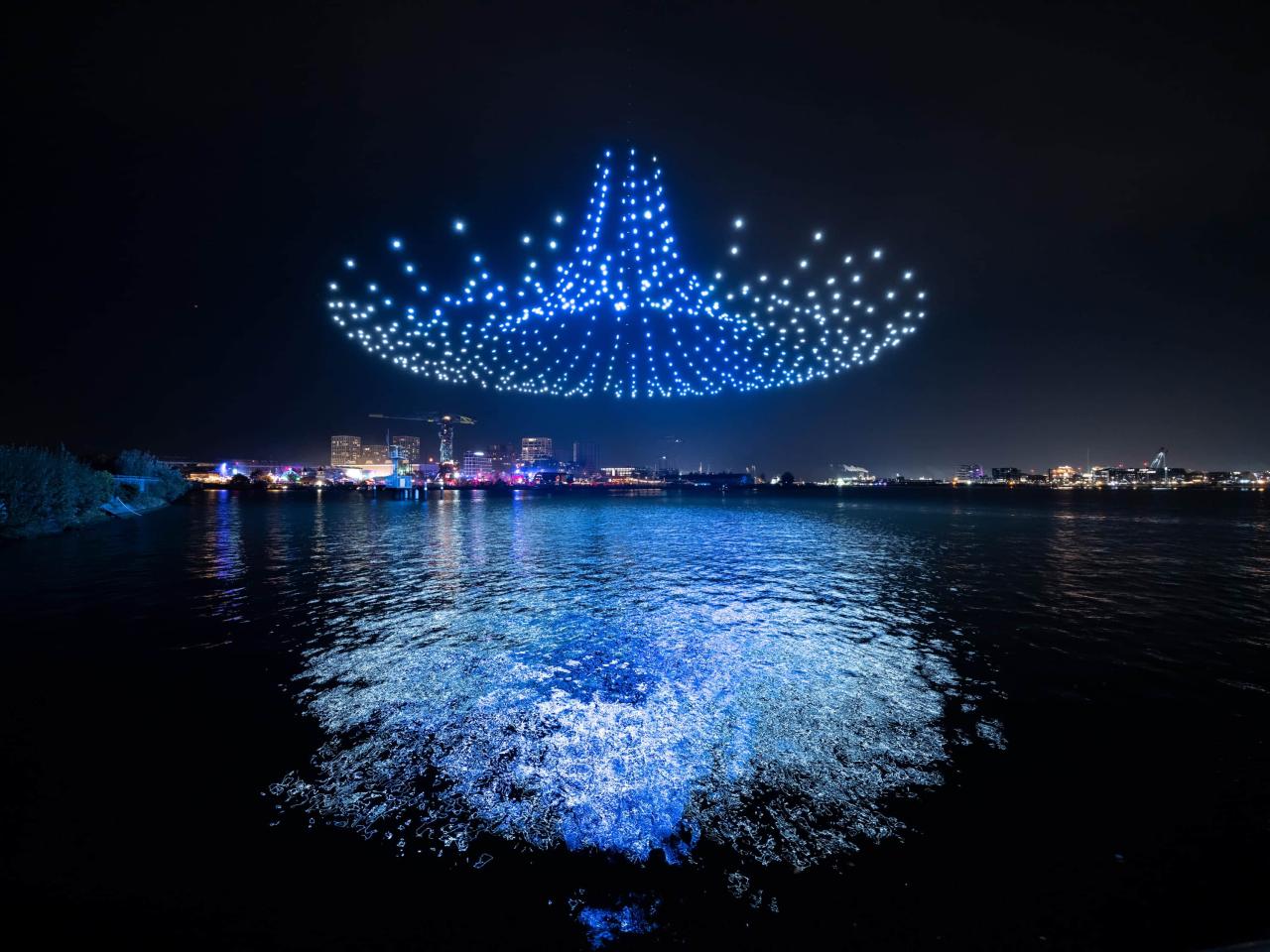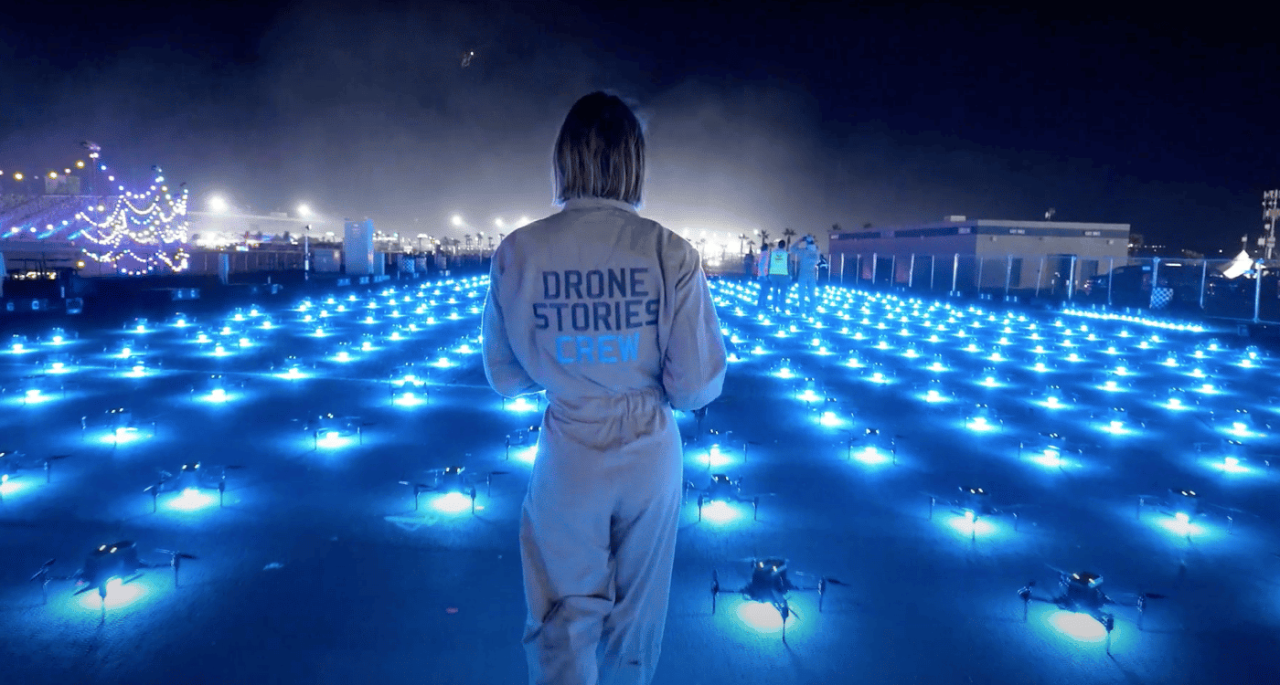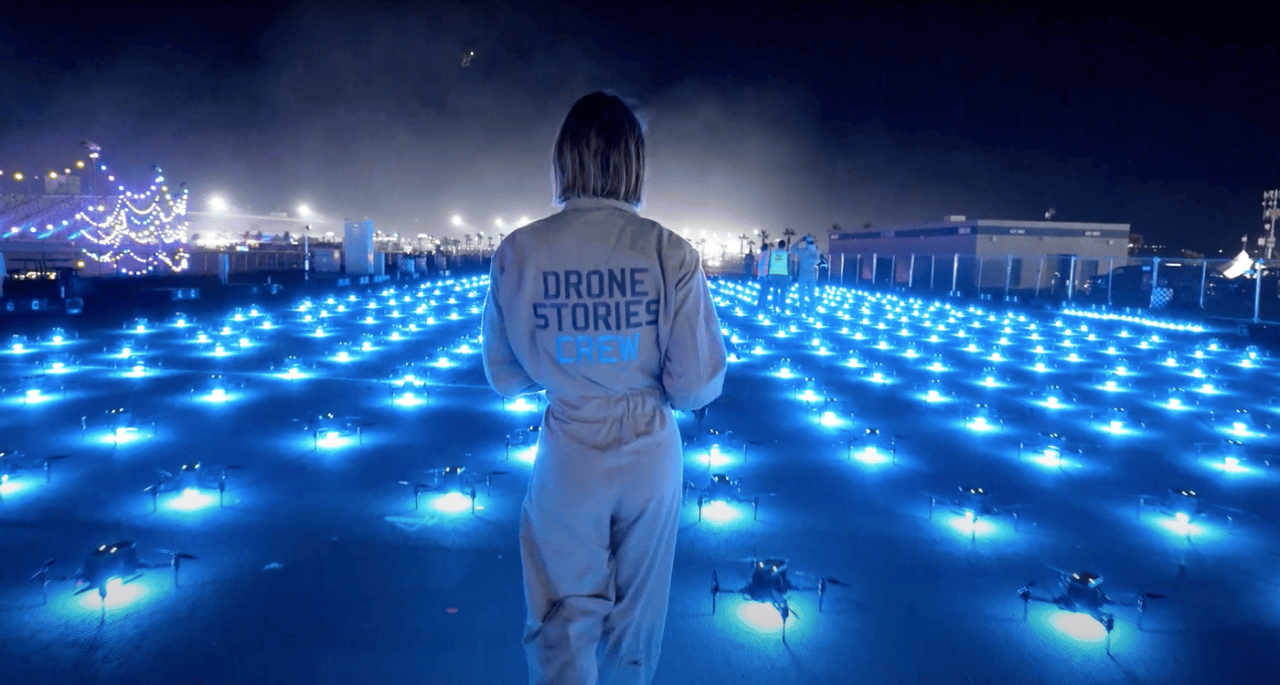Florida Drone Shows: Imagine a breathtaking spectacle of hundreds of drones painting vibrant images across the Florida night sky, synchronized to music and storytelling. This captivating technology is transforming entertainment and events across the Sunshine State, offering unique experiences and boosting the local economy. This guide delves into the world of Florida drone shows, exploring regulations, popular locations, show types, economic impact, safety protocols, technological advancements, and the creative artistry behind these mesmerizing displays.
Florida drone shows are becoming increasingly popular, offering spectacular nighttime displays. However, the industry isn’t without its risks; a recent incident highlighted this, as reported in this article about a florida drone accident. Understanding such incidents is crucial for ensuring the continued safe and successful development of Florida’s vibrant drone show scene. Proper safety regulations and operator training are paramount to prevent future mishaps.
From the permitting process and FAA regulations to the logistical considerations of hosting a large-scale show, we examine the multifaceted nature of this burgeoning industry. We’ll highlight popular locations known for their suitability and discuss the various types of shows, ranging from themed events to corporate displays. We also analyze the significant economic contributions these shows make to Florida’s tourism and job markets, while also addressing critical safety and security measures.
Florida Drone Show Regulations and Permits
Organizing a drone show in Florida requires navigating a complex web of regulations at both the state and federal levels. Understanding these requirements is crucial for ensuring a safe, legal, and successful event. This section details the permitting process, relevant regulations, and key differences in requirements based on show size and type.
Permitting Process for Drone Shows in Florida
The permitting process involves obtaining necessary approvals from both the Federal Aviation Administration (FAA) and relevant state and local authorities. At the federal level, the FAA’s Part 107 regulations govern commercial drone operations, including drone shows. This includes registering drones, obtaining a Remote Pilot Certificate, and filing a flight plan. State and local regulations may include noise ordinances, airspace restrictions, and event permits.
The specific requirements will vary depending on the location and scale of the show.
FAA Regulations for Commercial Drone Operations in Florida
For large-scale drone shows, FAA regulations become particularly stringent. Operators must demonstrate a high level of competency and adherence to safety protocols. This includes detailed flight plans, risk assessments, and procedures for handling emergencies. The FAA may also require the involvement of a certified air traffic control specialist for shows near airports or other sensitive airspace.
Comparison of Permitting Requirements for Different Drone Show Sizes
Permitting requirements differ significantly based on the size and complexity of the drone show. Smaller, localized shows may require simpler permits and less stringent safety protocols compared to large-scale events with hundreds of drones and extensive choreography. The number of drones, the duration of the show, and the proximity to populated areas all factor into the complexity of the permitting process.
Key Permit Requirements Summary
| Requirement | FAA | State/Local | Notes |
|---|---|---|---|
| Application Fee | Varies | Varies | Fees depend on the complexity of the show and the governing authority. |
| Timeline | Several weeks to months | Varies | Allow ample time for processing. |
| Required Documentation | Flight plan, risk assessment, pilot certifications | Event permit, insurance, site plan | Specific requirements vary based on the show’s size and location. |
Popular Locations for Florida Drone Shows
Several locations in Florida offer ideal settings for drone shows, each with unique advantages and logistical considerations. The choice of location depends on factors such as audience capacity, airspace restrictions, and accessibility.
Suitable Locations for Drone Shows
Five popular locations frequently used for or suitable for drone shows in Florida include: large parks offering open spaces with minimal airspace restrictions; beaches providing stunning backdrops and ample viewing areas; designated event spaces with existing infrastructure; waterfront locations offering unique perspectives and ambiance; and theme parks, capitalizing on existing infrastructure and large audiences. Logistical considerations for each location include airspace restrictions, accessibility for both the audience and drone operators, and proximity to crowds.
Location Comparison for Drone Shows

| Location | Accessibility | Audience Capacity | Airspace Considerations |
|---|---|---|---|
| Large Park (e.g., Central Park, Orlando) | High | High | Moderate (requires FAA coordination) |
| Beach (e.g., Clearwater Beach) | High | High | Low to Moderate (depending on proximity to airports) |
| Designated Event Space | High | Varies | Moderate to High (depending on location) |
| Waterfront Location | Moderate to High | Varies | Moderate (requires FAA coordination) |
| Theme Park (e.g., Disney World) | High | Very High | High (complex airspace management required) |
Types of Drone Shows in Florida
Drone shows in Florida showcase a diversity of creative approaches, adapting to different themes, occasions, and technological capabilities. This section explores various types of drone shows, highlighting their unique characteristics and technical requirements.
Examples of Drone Show Types, Florida drone show
Florida hosts various drone shows, including themed shows (e.g., pirate-themed shows, historical reenactments), holiday shows (e.g., Christmas light displays, Fourth of July celebrations), and corporate events (product launches, brand activations). Each type requires specific choreography, lighting, and music integration to match the event’s theme and objectives. Technical differences in drone deployment and programming are also evident, with more complex shows demanding advanced synchronization and control systems.
Categorization of Drone Show Types

| Show Type | Description | Typical Audience Size | Technical Requirements |
|---|---|---|---|
| Themed Show | Story-driven show with specific visual narrative | 500-10,000+ | Advanced choreography, custom lighting |
| Holiday Show | Seasonal display emphasizing festive imagery | 100-5,000+ | Synchronized lighting, simple choreography |
| Corporate Event | Brand-focused show integrated with other event elements | 100-1,000+ | Custom designs, logo integration |
Economic Impact of Drone Shows in Florida
Drone shows contribute significantly to Florida’s economy, generating revenue through tourism and creating job opportunities. The industry’s potential for future growth is substantial, further boosting economic activity across the state.
Economic Contributions of Drone Shows
- Increased tourism revenue: Drone shows attract visitors, boosting spending in hotels, restaurants, and local businesses.
- Job creation: The industry creates jobs for drone pilots, programmers, technicians, and event organizers.
- Enhanced brand visibility: Corporate drone shows increase brand awareness and attract potential clients.
- Stimulation of local economies: Drone shows generate revenue for local businesses in the host communities.
Safety and Security Protocols for Florida Drone Shows
Prioritizing safety and security is paramount for successful drone shows. Implementing robust protocols throughout the pre-show, during-show, and post-show phases ensures the well-being of both the audience and the drones.
Safety and Security Measures
- Pre-show: Thorough site assessment, risk assessment, emergency response plan development, drone inspection and maintenance, pilot briefing.
- During-show: Designated flight zones, crowd control measures, real-time monitoring of drone operations, communication channels with emergency services, backup systems in place.
- Post-show: Drone recovery and inspection, data analysis, review of safety protocols, addressing any incidents or near misses.
Technological Advancements in Florida Drone Shows
The drone show industry is characterized by rapid technological advancements, leading to enhanced capabilities, improved show designs, and richer audience experiences. This section explores the latest technologies and their impact on the industry.
Technological Advancements and their Impact
Recent advancements include improved drone autonomy, enhanced GPS accuracy, more sophisticated lighting systems, and advanced software for choreography and synchronization. These advancements enable larger, more complex, and visually stunning shows with greater precision and reliability. The use of AI-powered systems for autonomous flight and real-time obstacle avoidance further enhances safety and reduces the need for human intervention.
Comparison of Drone Models
| Drone Model | Features | Capabilities | Cost |
|---|---|---|---|
| Example Model A | High brightness LEDs, precise positioning | Large-scale formations, complex choreography | High |
| Example Model B | Compact size, long flight time | Smaller shows, indoor applications | Moderate |
Visual Design and Creative Aspects of Florida Drone Shows
The creative process behind a successful drone show is multifaceted, encompassing choreography, lighting, music selection, and visual storytelling. This section explores the key design elements that contribute to a visually impactful and memorable experience.
Key Design Elements for Successful Drone Shows

- Compelling narrative: A clear story arc that unfolds throughout the show, keeping the audience engaged.
- Dynamic choreography: Fluid and visually arresting formations that transition smoothly between scenes.
- Synchronized lighting: Strategic use of color and light to enhance the visual narrative and create mood.
- Immersive soundscape: Music and sound effects that complement the visual elements and heighten emotional impact.
- Innovative designs: Unique and creative use of drone formations to produce visually stunning effects.
Florida drone shows represent a dynamic intersection of technology, creativity, and entertainment. Their growing popularity underscores the potential for innovative and captivating experiences. As technology continues to advance, the possibilities for even more spectacular and immersive shows are limitless, promising continued economic growth and unique entertainment opportunities for Florida residents and visitors alike. Understanding the regulations, safety protocols, and creative processes involved is crucial for the continued success and responsible development of this exciting industry.
Common Queries
What is the average cost of a Florida drone show?
Florida drone shows are becoming increasingly popular, offering spectacular nighttime displays. These shows often utilize advanced drone technology, and a prime example of such technology is showcased by companies like Sky Elements, whose impressive drones you can learn more about here: sky elements drones. The innovative capabilities of these drones significantly enhance the visual impact and complexity of Florida’s drone show productions, making for truly unforgettable experiences.
Costs vary greatly depending on the size, duration, complexity, and specific features of the show. Expect a wide range, from several thousand to tens of thousands of dollars.
How long does the permitting process typically take?
Permitting timelines can vary, but it’s advisable to begin the application process several months in advance to allow sufficient time for review and approval.
Are there restrictions on the types of drones that can be used?
Florida drone shows are becoming increasingly popular, offering spectacular nighttime displays. However, the industry isn’t without its risks; a recent incident highlighted the potential dangers, as detailed in this report on a florida drone accident. Understanding such incidents is crucial for ensuring the continued safe and successful operation of future Florida drone shows.
Yes, FAA regulations and show-specific requirements often dictate the types of drones permitted. Factors such as drone model, capabilities, and safety features are considered.
What happens if there’s bad weather on the day of the show?
Most drone shows have contingency plans for inclement weather, including postponements or cancellations. Specific policies vary depending on the organizer.
